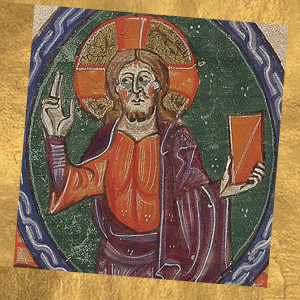St. John Henry Newman
Preparation
“Great acts take time,” wrote John Henry Newman, who in his thirties was already one of the most esteemed preachers of the Church of England. The acts of God, too, undergo a long and hidden preparation. Such was the “journey,” as Newman would call it, that led this Oxford professor, a moral and a literary giant of his time, into the Catholic Church.
Born in London in 1801 to a middle-class family, John Henry Newman had his first real experience of God at age fifteen. He converted to evangelical Christianity and began university studies at Oxford. The more-than-capable student could have taken many paths to worldly success, but chose instead to pursue the priesthood in the Church of England. Newman even decided to remain celibate – unusual for an Anglican cleric. He became a beloved pastor, while lecturing and tutoring at Oriel College, Oxford.
At Oriel, Newman began to study the Fathers of the Church, those great figures of the early Church who articulated the foundations of the Christian faith. Something stirred inside of him. The Fathers had a vision of the Church alive in her faith, unified and growing. “Some portions of their teaching,” Newman wrote, “came like music to my inward ear.”
“…a work to do in England”
The seed of a mission had been planted. On a tour of southern Europe in 1833, Newman fell ill in Sicily and almost died. Delirious, he said to his servant, “I shall not die…. I have a work to do in England.” He recovered and returned to England. The outward journey had ended, but the inward journey, hard and earnest, had intensified.
Newman wanted to live in that Church of the Fathers. So first, with friends – he was a man of deep friendships – he embarked on what became known as the Oxford Movement. The movement was an attempt to renew the Church of England from within, returning to it elements of the liturgy, mentality and zeal of the ancient Church. It bore fruit among his countrymen.
Yet Newman himself was ill at ease, as he read and pondered what the Fathers described. The unease was reflected in his writings, which drew the attention of Oxford authorities for being too little Protestant, and Newman left the university.
“The whole man moves”
In 1842, he withdrew to the village of Littlemore with friends, praying and wrestling with his prejudices against the Church of Rome. Why did she teach things that did not seem to be present in the early Church? He was reasoning, but not abstractly, for he wanted any shift of his opinions to be based on something stronger than abstract reason. “It is the concrete being who reasons.” Or again, “the whole man moves,” and this takes time. For three years, he prayed and studied. In 1845, he published what would become a Christian classic, An Essay on the Development of Doctrine, showing how the Church develops her understanding and articulation of dogma over time. Dogma “changes… in order to remain the same,” for what Christians believe about the triune God, Jesus Christ and the Church is something alive and life-giving, and living things grow.
In that same year, John Henry Newman, the brilliant professor and renowned preacher, asked a poor Italian missionary to hear his confession and entered the Catholic Church. He, too, was alive, and in order to stay true to his conscience, he changed.
Friends abandoned him, accusing him of betrayal. He had to leave his beloved Oxford definitively. It was, he wrote, like “setting out onto the open sea.”
“Heart speaks to heart”
Two years later, in Rome, Newman was ordained a Catholic priest. He entered the Oratory of St. Philip Neri, bringing that community’s form of priestly life to England the following year. From 1854-1858, he was in Dublin, at the Irish bishops’ request that he begin a Catholic university there. Back in England, he was a priest tending to poor immigrants and factory workers who worshipped at the Oratory.
In 1862, in response to a public attack that questioned his conversion, Newman published an autobiography that remains a masterpiece of the English language: Apologia Pro Vita Sua, “a defense of my life.” He understood that some accusations could only be answered by the testimony of a life, an “argument” in the flesh.
By 1879, this convert of such obvious integrity had drawn the eye of Pope Leo XIII, who named Newman a cardinal – and granted Newman’s plea not to be consecrated a bishop. “Cor ad cor loquitur,” “Heart speaks to heart,” Newman chose as his motto. Christianity had come to him in a personal way at fifteen, when God spoke to his heart, and something of this personal character marked his preaching, his deep friendships and thinking all his life.
“Lead, kindly Light … lead Thou me on!”
Great acts take time, and in 1890, God’s act of fashioning the life of his servant was completed. “Lead, kindly Light,” the young Newman had prayed. God did lead him: out of the places, ideas and relationships in which he had been comfortable, until finally, in the words inscribed on his tombstone, John Henry Newman stepped “out of the shadows and images into the truth.” Pope Francis canonized him in 2019.







